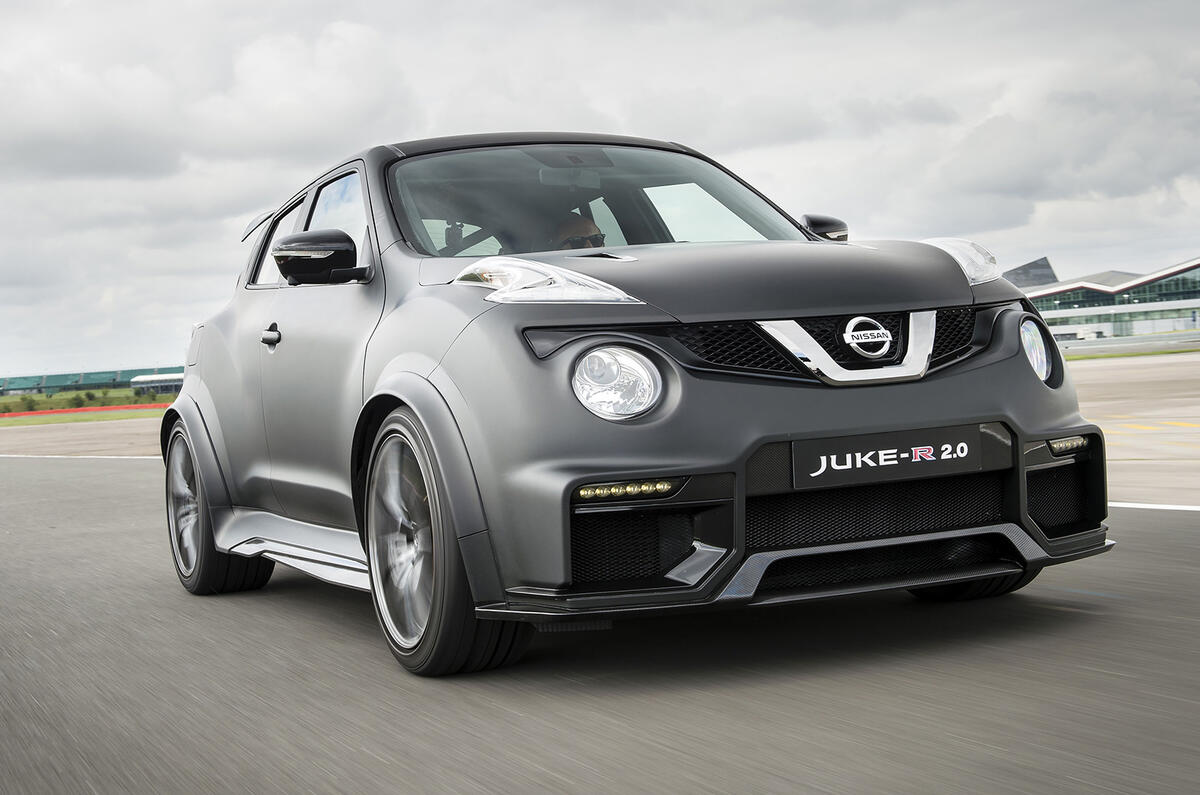Turns out it was just a scurrilous rumour. Pity. The new Nissan Juke-R 2.0 isn't powered by the actual engine out of Sir Chris Hoy's crashed Nissan GT-R Nismo after all.
You might remember that at last year’s Goodwood Festival of Speed, former bicycle helmsmith Hoy had a small spot of bother at a corner called Molecomb, while driving a Nissan GT-R Nismo.
Rumour had it that the 591bhp V6 engine had been rescued from the deformed GT-R and put into the Juke-shaped car you see here, the fast and faintly ridiculous Juke-R 2.0. But, no; to ruin a good yarn, that’s not the case.
Apparently the V6 still rests in Sir Chris's ex-car which itself remains in broken form in a garage where it is slowly being bastardised to fix other GT-R Nismos because parts are otherwise rare and take a long time to arrive from Japan.
So this revised Juke-R, then, is an evolution of what came before, rather than the recipient of an engine transplant. When it was launched in 2012 the original Juke-R was a mechanically sound but aesthetically – particularly on the inside – functional concept, aimed at bringing some perceived sportiness (and actual bonkersness) to Nissan's Nissan Juke range.
It was prepared by race and engineering specialist Ray Mallock Ltd (RML), to which two Jukes and three GT-Rs were given. The first-gen Juke-R had a 485bhp V6 under the bonnet, the 250mm-shortened drivetrain of a GT-R beneath the skin, a rollcage to add valuable body stiffness and various bits either cut away or, conversely, welded into place.






